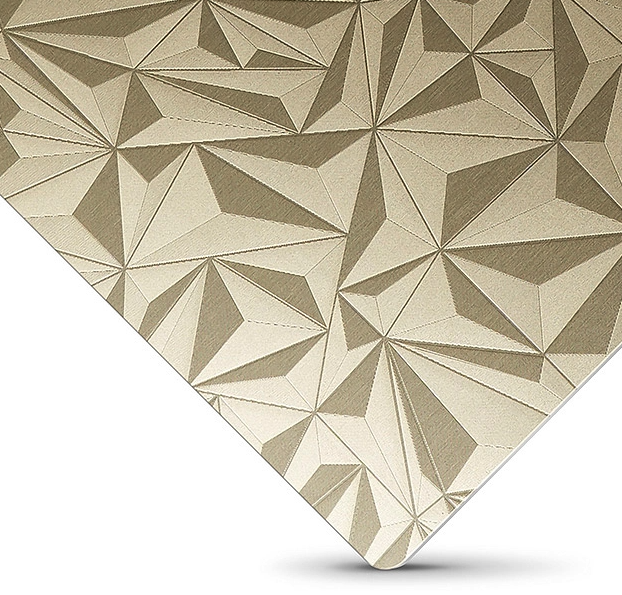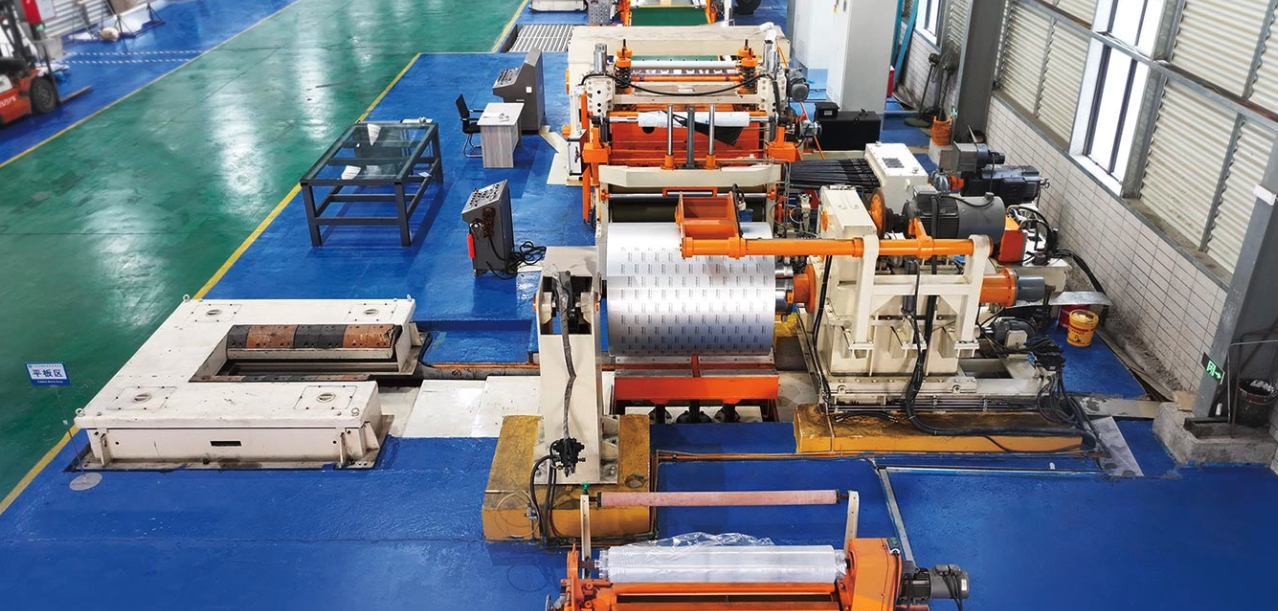- Home
- Products
- OEM&ODM Services
- About
- Applications
- Resources
- Blogs
- Contact
Views: 0 Author: Site Editor Publish Time: 2025-08-08 Origin: Site











In the realm of modern manufacturing, precision and customization are paramount. Guangdong Anlv New Material Co., Ltd., a leading manufacturer of anodized aluminum products, understands the significance of these principles. Batch anodizing is a specialized surface finishing technique that transforms aluminum into a durable and aesthetically pleasing material. This process is essential for industries that demand both functionality and visual appeal.
Precision in metal finishing refers to the ability to achieve tight tolerances and uniform coating thickness. This is crucial for applications where the slightest deviation can impact performance. Batch anodizing ensures that each part meets exact specifications, providing consistent results across all components.
Process control is vital in achieving precision. Factors such as voltage, bath chemistry, and temperature must be carefully regulated. At Guangdong Anlv New Material Co., Ltd., advanced equipment and experienced technicians ensure that these parameters are maintained within tight tolerances.
For industries like medical devices and aerospace components, consistency is key. Batch anodizing allows manufacturers to achieve repeatable and consistent results, ensuring that each part meets the highest standards of quality. This level of precision is essential for high-spec applications where reliability and performance are non-negotiable.
Batch anodizing also allows for customization of texture and surface effects. Whether you need a matte, satin, or gloss finish, Guangdong Anlv New Material Co., Ltd. can tailor the anodizing process to meet your specific requirements. This level of customization enhances both the functionality and aesthetic appeal of the final product.
Different applications require different levels of anodizing thickness. Decorative anodizing provides a thin, visually appealing layer, while hard anodizing creates a thicker, more durable coating. Guangdong Anlv New Material Co., Ltd. can adjust the anodizing thickness to meet your specific needs, whether you require a lightweight decorative finish or a robust protective layer.
Masking techniques play a crucial role in the anodizing process, especially when working with anodized aluminum plates. These techniques allow for precise control over which areas of the part are anodized. By selectively covering certain sections of the aluminum plate, manufacturers can create unique and functional components that meet specific design and functional requirements. This level of customization is particularly useful in applications where different areas of the plate need varying levels of protection or where specific patterns and designs are required.

Pre-treatment – The surface is cleaned, etched, and prepared to ensure optimal adhesion of the anodizing layer.
Racking and Setup – Parts are securely racked to ensure proper electrical contact, a critical step in the anodizing process.
Anodizing – The electrolytic oxidation process creates a durable oxide layer on the aluminum surface.
Coloring/Dyeing – The anodized layer can be colored using electrolytic or organic dye methods, providing a wide range of aesthetic options.
Sealing – The surface pores are sealed to enhance corrosion resistance and durability.
Inspection and Quality Control – Each part is thoroughly inspected to ensure it meets all specifications and quality standards.
Anodized aluminum offers long-lasting protection against harsh environments. The oxide layer created during the anodizing process acts as a barrier against corrosion, ensuring that the material remains durable and functional over time.
Batch anodizing provides excellent wear and abrasion resistance, making it ideal for high-contact components. This durability reduces maintenance costs and extends the lifespan of the product.
The anodizing process enhances the visual appeal of aluminum, providing consistent and vibrant colors. Whether you need a decorative finish or a functional coating, batch anodizing delivers superior aesthetic quality.
Anodizing is an environmentally friendly process. Aluminum is recyclable, and the anodizing process itself is non-toxic, making it a sustainable choice for modern manufacturing.
The grade of aluminum used can significantly impact the results of the anodizing process. Different alloys have different properties, and choosing the right one is crucial for achieving the desired finish.
The chemistry of the anodizing bath and the temperature during the process are critical factors in controlling oxide layer formation. Proper regulation ensures consistent and high-quality results.
Proper racking and electrical contact are essential to avoid defects and inconsistencies. Experienced technicians at Guangdong Anlv New Material Co., Ltd. ensure that each part is properly prepared for the anodizing process.
Skilled technicians play a vital role in ensuring quality. Their expertise in process control and troubleshooting ensures that each batch meets the highest standards of precision and consistency.
While powder coating offers durability and a wide range of colors, batch anodizing provides superior corrosion resistance and a more uniform finish. Anodized aluminum is also more environmentally friendly and recyclable.
Painting can provide a visually appealing finish, but it lacks the durability and longevity of anodizing. Anodized aluminum resists wear and corrosion, making it a more sustainable choice for long-term use.
Plating can offer excellent adhesion and environmental resistance, but it often involves more complex processes and higher costs. Anodizing provides a simpler, more cost-effective solution while still delivering high-quality results.
| Feature/Characteristic | Batch Anodizing | Powder Coating | Painting | Plating |
|---|---|---|---|---|
| Corrosion Resistance | Superior | Good | Low | High |
| Uniformity | High | Moderate | Low | High |
| Environmental Impact | Low (Eco-friendly) | Moderate (VOCs) | Moderate (VOCs) | High (Complex) |
| Cost | Moderate | High | Low | High |
| Aesthetic Quality | Wide color range, UV-resistant | Wide color range | Visually appealing, but fades | Limited colors |
| Maintenance | Low | Moderate | High | Moderate |
| Application | High-spec parts, aerospace, medical | Large, uniform parts | Decorative finishes | High-precision parts |
Quality control is a cornerstone of precision batch anodizing, and it begins with thorough inspection methods. At Guangdong Anlv New Material Co., Ltd., we employ state-of-the-art techniques to ensure that each part meets the highest standards of quality. Thickness measurement is a critical aspect of this process. Using advanced instruments, we measure the anodized layer’s thickness to ensure it falls within the specified tolerances. This step is essential because the thickness of the oxide layer directly impacts the part’s durability and performance.
Adhesion tests are another vital component of our inspection process. These tests verify that the anodized coating is firmly bonded to the underlying aluminum substrate. Proper adhesion ensures that the finish will not peel or flake off during use, maintaining the part’s integrity and appearance over time. By combining these inspection methods, we can guarantee that each part meets the required specifications, providing our customers with consistent and reliable results.
In addition to inspection methods, performance testing is a crucial aspect of quality control in precision batch anodizing. At Guangdong Anlv New Material Co., Ltd., we conduct a series of rigorous tests to ensure that the anodized finish can withstand harsh conditions. Salt spray testing, for example, simulates corrosive environments to evaluate the coating’s resistance to rust and corrosion. This test provides valuable data on how the anodized parts will perform in real-world applications, especially in outdoor or marine environments.
Abrasion testing is another essential performance test. This method assesses the coating’s ability to resist wear and tear from physical contact. By subjecting the anodized parts to controlled abrasion, we can determine how well the finish holds up under repeated use and exposure to abrasive forces. This information is particularly important for components that will be used in high-contact applications, such as mechanical parts or frequently handled items.

Proper cleaning is essential for maintaining the appearance and durability of anodized finishes. Use gentle cleaners and avoid abrasives to prevent scratching the surface.
Regular inspection and minor repairs can prolong the life of anodized components. Spot maintenance helps to address any issues before they become more significant problems.
Avoid harsh chemicals that can damage the anodized surface. Proper care and maintenance will ensure that your anodized components retain their visual appeal and functionality over time.
Batch anodizing can achieve very tight tolerances, ensuring uniform coating thickness and consistent results.
While anodizing is primarily used for aluminum, similar processes can be applied to other metals such as titanium.
Decorative anodizing provides a visually appealing finish, while hard anodizing creates a thicker, more durable layer for enhanced wear resistance.
Custom anodized finishes can last for many years, depending on the application and environmental conditions. Proper maintenance can further extend their lifespan.
Batch anodizing delivers precision and customization, making it the preferred choice for industries that demand both performance and aesthetics. Guangdong Anlv New Material Co., Ltd. offers a wide range of anodizing solutions, from decorative finishes to hard anodizing, ensuring that your specific needs are met. By working with an experienced anodizing provider, you can achieve optimal results and enhance the value of your products.